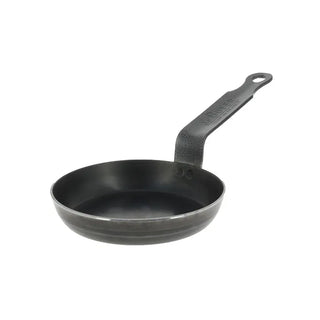Cooking enthusiasts and professional chefs alike have long praised cast iron dutch ovens for their versatility and performance. These heavy-duty pots are perfect for a wide range of dishes, from slow-cooked stews to crusty artisan bread. But what makes cast iron dutch ovens so special? The answer lies in the science of heat retention and even cooking.
What is a Cast Iron Dutch Oven?
A cast iron dutch oven is a thick-walled, usually cast iron, cooking pot with a tight-fitting lid. It is known for its ability to maintain consistent temperatures and evenly distribute heat, making it ideal for both stovetop and oven cooking. Many modern dutch ovens come with an enameled coating, which makes them easier to clean and eliminates the need for seasoning.
The Science of Heat Retention
High Thermal Mass
One of the primary reasons cast iron dutch ovens excel in the kitchen is their high thermal mass. Thermal mass refers to a material's ability to absorb and store heat. Cast iron has a high density, which means it can absorb a significant amount of heat and release it slowly over time. This property is crucial for maintaining steady cooking temperatures and preventing hot spots that can cause uneven cooking.
Heat Retention Benefits
- Even Cooking: The high thermal mass ensures that heat is distributed evenly across the entire surface of the pot, eliminating the risk of burning or undercooking parts of your dish.
- Consistent Temperature: Once a cast iron piece reaches the desired cooking temperature, it holds that temperature effectively, making it ideal for slow cooking and braising.
- Energy Efficiency: The ability of cast iron to retain heat means you can cook at lower temperatures, saving energy and reducing cooking times.
The Role of Enameled Coating
Modern cast iron dutch ovens often come with an enameled coating. This coating serves several purposes:
- Ease of Cleaning: The enameled surface is non-stick, making it easier to clean than traditional cast iron, which requires regular seasoning.
- No Seasoning Required: Unlike traditional cast iron, enameled dutch ovens do not need to be seasoned, reducing maintenance and making them more user-friendly.
- Aesthetic Appeal: Enameled dutch ovens come in a variety of colours and finishes, adding a touch of style to your kitchen.
The Science of Even Cooking
Heat Distribution
Cast iron's ability to distribute heat evenly is a key factor in its cooking performance. When placed over a heat source, the entire pot, including the sides and lid, heats up uniformly. This uniform heat distribution is essential for cooking techniques such as braising, where maintaining a consistent temperature is crucial for breaking down tough cuts of meat and blending flavours.
Conduction and Convection
Cooking with a cast iron dutch oven involves both conduction and convection:
- Conduction: This is the transfer of heat from the heat source (stovetop or oven) directly to the pot. Cast iron’s high thermal conductivity ensures that heat is efficiently transferred from the source to the pot.
- Convection: Once the pot is hot, heat is transferred to the food inside through convection currents. The tight-fitting lid helps trap steam and heat, creating a convection effect that circulates heat throughout the pot, ensuring even cooking.
Practical Applications in the Kitchen
Searing and Browning
Cast iron cookware pieces are perfect for searing and browning meat. The high heat capacity allows for a perfect sear, locking in flavours and creating a delicious crust. After searing, you can add liquids and other ingredients, then cover the pot and transfer it to the oven for slow cooking.
Baking Bread
One of the lesser-known uses of a cast iron dutch oven is baking bread. The high heat retention and even heat distribution create an ideal environment for baking bread with a crispy crust and soft interior. The lid traps steam, which helps develop the crust, while the even heat ensures a uniform bake.
Versatility
From stews and soups to casseroles and roasted vegetables, the versatility of a dutch oven is unmatched. Its ability to transition from stovetop to oven means you can start a dish with high-heat searing on the stovetop and finish it with slow cooking in the oven, all in one pot.
Maintenance Tips for Cast Iron Dutch Ovens
To ensure your dutch oven lasts for generations, proper maintenance is essential:
- Cleaning: For enameled dutch ovens, avoid abrasive cleaners that can damage the coating. Use warm, soapy water and a soft sponge. For traditional cast iron, clean with hot water and a stiff brush, avoiding soap to maintain the seasoning.
- Seasoning: Enameled cast iron cookware does not need seasoning, whereas the traditional ones require regular seasoning. Coat the pot with a thin layer of vegetable oil and bake it in the oven at a high temperature to create a non-stick surface.
- Storage: Ensure your dutch oven is completely dry before storing. For enameled pots, place a paper towel between the lid and the pot to allow air circulation.
The science behind cooking with cast iron dutch ovens lies in their exceptional heat retention and even cooking capabilities. These properties make them indispensable tools in the kitchen, offering versatility, efficiency, and superior cooking performance. Whether you’re searing meat, baking bread, or slow-cooking a stew, a cast iron dutch oven delivers consistent and delicious results every time. Embrace the science, and enjoy the art of cooking with this timeless piece of cookware.



